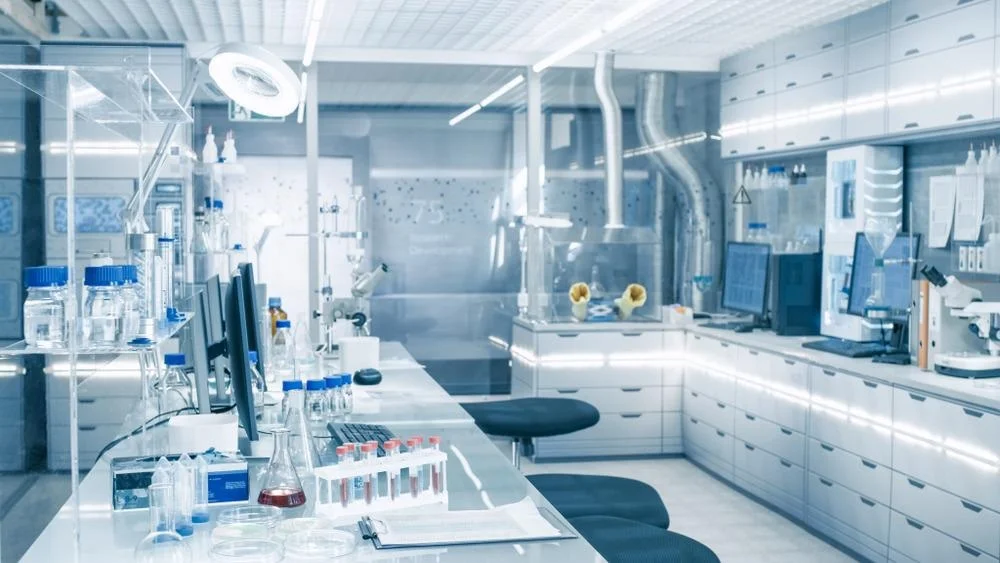Industrial Solvent Residue Organic Analysis
In today’s industrial landscape, ensuring compliance with regulatory standards and maintaining product quality is crucial. For many industries, the use of solvents can significantly impact the final product's safety and performance. In this article, we will delve into how our laboratory provides comprehensive analysis for organic compounds in industrial solvent residues.
The importance of such testing cannot be overstated. Solvents are widely used across various sectors including pharmaceuticals, electronics, paints, adhesives, and cleaning agents. The residue left behind after evaporation can contain a myriad of organic compounds that may pose health risks or environmental hazards if not properly managed.
Our laboratory employs state-of-the-art analytical techniques to ensure accurate and reliable results. This includes the use of high-performance liquid chromatography (HPLC) coupled with mass spectrometry (MS), gas chromatography-mass spectrometry (GC-MS), and Fourier transform infrared spectroscopy (FTIR). These methods allow us to identify even trace amounts of organic compounds present in the solvent residues.
The process begins with thorough sample preparation, which involves drying and purification steps tailored to each specific solvent. This ensures that any detected compounds are representative of those actually present in the final product or waste stream. Once prepared, samples undergo rigorous analysis using our sophisticated instrumentation.
Our team of experienced scientists then interprets the data obtained from these analyses to provide detailed reports outlining the presence and concentration levels of various organic compounds identified within the solvent residues. Compliance with international standards such as ISO 17025 is strictly adhered to throughout this process, ensuring credibility and reliability.
By offering Industrial Solvent Residue Organic Analysis services, we aim to support businesses in meeting stringent regulatory requirements while also providing valuable insights into potential improvements for their manufacturing processes. Whether it’s identifying sources of contamination or optimizing recycling strategies, our expertise can help drive safer operations across multiple industries.
Scope and Methodology
The scope of our Industrial Solvent Residue Organic Analysis service extends beyond mere identification; it encompasses a comprehensive approach to understanding the composition of organic compounds within industrial solvents. Our methodology adheres strictly to internationally recognized standards like ISO 17025, ensuring accuracy and consistency in every analysis conducted.
- Sample Preparation: Each sample submitted undergoes meticulous handling from initial reception through final preparation for analysis. This includes thorough drying procedures combined with precise purification methods designed specifically for each type of solvent used.
- Analytical Techniques: Utilizing advanced technologies such as HPLC-MS, GC-MS, and FTIR allows us to detect even minute traces of organic compounds that might otherwise go undetected by less sensitive equipment. This ensures no detail is overlooked when assessing the quality or potential hazards associated with industrial solvents.
- Data Interpretation: Post-analysis, our skilled chemists analyze all collected data meticulously before compiling detailed reports. These documents not only list identified compounds but also provide contextual information about their significance in relation to health and environmental concerns.
Industry Applications
The demand for reliable Industrial Solvent Residue Organic Analysis is driven by numerous factors including increasing awareness regarding occupational safety, stringent regulatory frameworks governing hazardous substances, and growing emphasis on sustainable practices within manufacturing processes. Here are some key areas where our service finds application:
- Pharmaceutical Manufacturing: Ensuring the purity of solvents used in drug formulations is paramount to maintaining efficacy and safety.
- Electronics Production: Minimizing contamination from residual solvents helps protect delicate electronic components during fabrication.
- Packaging Industry: Avoiding the incorporation of harmful residues improves product integrity while enhancing consumer trust.
- Cleaning Solutions Development: Rigorous testing ensures that cleaning agents are biodegradable and free from persistent organic pollutants (POPs).
In addition to these sectors, our service plays a critical role in supporting research & development efforts aimed at creating greener alternatives to traditional solvents. By providing precise data on current solvent compositions, we enable innovators to explore safer, more sustainable solutions.
International Acceptance and Recognition
- ISO 17025 Compliance: Our laboratory is fully accredited under this international standard for proficiency in testing and calibration laboratories, ensuring our methodologies meet the highest scientific standards.
- American Society for Testing and Materials (ASTM): Recognized globally for its leadership role in developing technical standards for materials used across diverse industries.
- Institute of Electrical and Electronics Engineers (IEEE): Known for setting the benchmark for electrical engineering and related sciences through its extensive range of standards.





